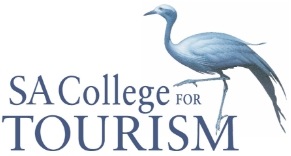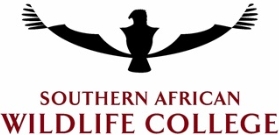Peace Parks Foundation
Passionately protecting and restoring critical ecosystems..
Peace Parks Foundation
The Peace Parks dream is to re-establish, renew and preserve large functional ecosystems that transcend man-made boundaries – thereby protecting and regenerating natural and cultural heritage vital to enabling and sustaining a harmonious future for man and the natural world.
"The core purpose of Peace Parks Foundation is to enable a balance – a harmony if you will – between conservation and consumption, between man and nature."
‘I know of no political movement, no philosophy, no ideology, which does not agree with the peace parks concept as we see it going into fruition today. It is a concept that can be embraced by all.’ ~ NELSON MANDELA, FOUNDING PATRON OF PEACE PARKS FOUNDATION
ABOUT PEACE PARKS
Peace Parks Foundation recognises the importance of conserving and developing core areas, corridors and keystone species, irrespective of political boundaries, to secure biodiversity conservation, which in turn is the most important foundation to ensure maintained, healthy and functional ecosystems – essential for the survival of all fauna and flora on the earth, including man.
Peace Parks Foundation has been actively involved with the establishment and development of ten of the 18 Transfrontier Conservation Area's (TFCAs) found throughout southern Africa, all of which are in various stages of development. The establishment of each TFCA, or peace park, is complex and far-reaching, and involves several phases of activity, which can take many years to achieve. It is an exemplary process of partnerships between governments and the private sector – an African success story that will ensure peace, prosperity and stability for generations to come.
# A transfrontier conservation area (TFCA) is defined as the area or component of a large ecological region that straddles the boundaries of two or more countries, encompassing one or more protected areas as well as multiple resource use areas.
Read some of the heart-warmy stories from Peace Parks
The peace parks of southern Africa present a powerful vision of a shared ecological heritage and a mutually sustainable future. This is indeed an African dream to inspire a jaded world.
PARKS CURRENTLY UNDER MANAGEMENT
The Great Limpopo Transfrontier Park – home to more than 850 animal and 2 000 plant species – was one of the first formally established peace parks in southern Africa. This 35 000 km² park links the Limpopo National Park in Mozambique, the Kruger National Park in South Africa, and the Gonarezhou National Park in Zimbabwe and also links the Sengwe communal land in Zimbabwe and the Makuleke region in South Africa, which lies between the Kruger and Gonarezhou parks.
The larger Great Limpopo Transfrontier Conservation area (TFCA), measuring almost 100 000 km², includes the Banhine and Zinave National Parks, the Massingir and Corumana areas and interlinking regions in Mozambique, as well as various privately and state-owned conservation areas in South Africa and Zimbabwe bordering on the transfrontier park.
Malawi-Zambia transfrontier conservation area - comprises of to main two components: (1) The Nyika-North Luangwa component is centred on a high undulating montane grassland plateau rising over 2 000 m above the bushveld and wetlands of Vwaza Marsh. These high-lying areas are often shrouded in mist, giving them a unique appeal. In summer a multitude of wild flowers and orchids burst forth on the highlands, making it a sight unlike any seen in most other game parks. (2) The Kasungu/Lukusuzi component, on the other hand, is an area of importance for biodiversity conservation in the Central Zambezian Miombo Woodland Ecoregion.
The Liuwa Plains-Mussuma TFCA protects the second largest wildebeest migration in Africa, as well as a significant portion of the catchment area of the Zambezi River, Africa’s fourth largest river system. The Liuwa Plains-Mussuma TFCA measures 14 464 km² and spans the border of Angola and Zambia.
The Lubombo TFCA includes four distinct transfrontier conservation areas between Mozambique, South Africa and The Kingdom of eSwatini (formerly Swaziland), covering a total area of 10 029 km². From coral reefs and turtle nesting sites, to coastal plains and over woodlands to the Lebombo Mountain Range, this area is one of the most striking areas of biodiversity globally.
The Kavango Zambezi (KAZA) TFCA is situated in the Kavango and Zambezi river basins where the borders of Angola, Botswana, Namibia, Zambia and Zimbabwe converge. It spans an area of approximately 520 000 km² and includes 36 proclaimed protected areas such as national parks, game reserves, forest reserves, community conservancies and game/wildlife management areas. Nestled within KAZA's boundaries are two of Africa’s biggest tourist attractions. The Victoria Falls is both a World Heritage Site and one of the seven natural wonders of the world. The Okavango Delta, the largest inland delta and a World Heritage Site, is a magical place where largescale migrations of mega fauna take place annually.
The /Ai/Ais-Richtersveld Transfrontier Park measures 5 920 km² and spans some of the most spectacular arid and desert mountain scenery in southern Africa. The transfrontier park also features the Fish River Canyon, the largest canyon in Africa. Where one-third of the world’s 10 000 succulent species grow.
The Greater Mapungubwe Transfrontier Conservation Area measures 5 909 km2 and encompassies areas in three countries – Botswana, South Africa and Zimbabwe. Established in May 2000, the Kgalagadi Transfrontier Park is 35 551 km2 in extent, of which 73% is in Botswana with the remainder in South Africa. This is the only Transfrontier Park that is open in the true sense of the word – here tourists can move freely across the international border within the boundaries of the park. This peace park has been in de facto existence since 1948 through a verbal agreement between South Africa and Botswana (Africa's first peace park), and consisted of the Gemsbok National Park in Botswana (proclaimed in 1971), the Kalahari Gemsbok National Park in South Africa (proclaimed in 1931) and subsequently extended to incorporate the Mabuasehube Game Reserve.
Situated at the confluence of the Shashe and Limpopo Rivers, Mapungubwe TFCA was once the center of civilisation in the south with evidence of the oldest modern capital city in southern Africa with over 5 000 inhabitants living there at its peak (±1 100 AD). Yet today it is populations of lion, leopard, cheetah, spotted hyena, various ungulates and the population of over 900 elephant in Botswana’s Northern Tuli Game Reserve that call this vast savannah biome home.
The Maloti-Drakensberg Transfrontier Conservation and Development Area covers 14 740 km² of the mountains that straddle the north-eastern border between Lesotho and South Africa. This cross-border protected area preserves the globally important biodiversity and cultural value of the entire region. This vast stretch of land is home to almost two million people, contributing to an explicit goal of the TFCA – to make a positive difference in the livelihoods of people by ensuring that they benefit from nature-based tourism. The TFCA includes the Tsehlanyane National Park in Lesotho, as well as a transboundary World Heritage Site – the Maloti-Drakensberg Park – composed of the Sehlathebe National Park in Lesotho and the uKhahlamba Drakensberg National Park in South Africa.
The Lower Zambezi – Mana Pools TFCA is composed of the Lower Zambezi National Park (4,092 km²) in Zambia, and the Mana Pools National Park in northern Zimbabwe (2,196 km²). This transfrontier conservation area measures 17 745km2 and lies in the Zambezi Valley, which since the dawn of time has been used by wildlife as a thoroughfare between the escarpment and the Zambezi River.
Courtesy: PeaceParks.org
‘Our job is to keep on doing what we do – giving the tools to the right people, so they can do what they really need and want to do, which is to improve the lives of their communities in a sustainable way. At a local level, and indeed at a global level, this means finding practical, mutually beneficial ways for man and nature to thrive together. If we can keep on demonstrating that this is in fact possible, then I’m very hopeful about the future.’ ~ JOHANN RUPERT, CHAIRMAN OF PEACE PARKS FOUNDATION
ARTICLES OF INTEREST
Stories from the Peace Parks network (updated regularly).
Peace Parks Annual Review - 2023 (PDF).
Changing the face of conservation: A message from our CEO 2022.
The Magnificence Of Maputo and Mozambique’s Slice Of Paradise - Zinave NP.
Groundbreaking technology saves Kruger's rhinos - Sept 2021 (video).
Peace Parks Annual Review - 2020 (PDF).
Peace Parks Annual Review - 2019 (PDF).
Custodians of Wilderness: The Sabie Game Park, Mozambique - this is the story of that game park.
Animals donated to Zinave National Park - Sept 2018 Tourism Update
Sales of carbon offsets to save Zambian forests - Sept 2018 by Kerry Hayes with Tourism Update
Peace Parks Foundation - promotional brochure (PDF)


